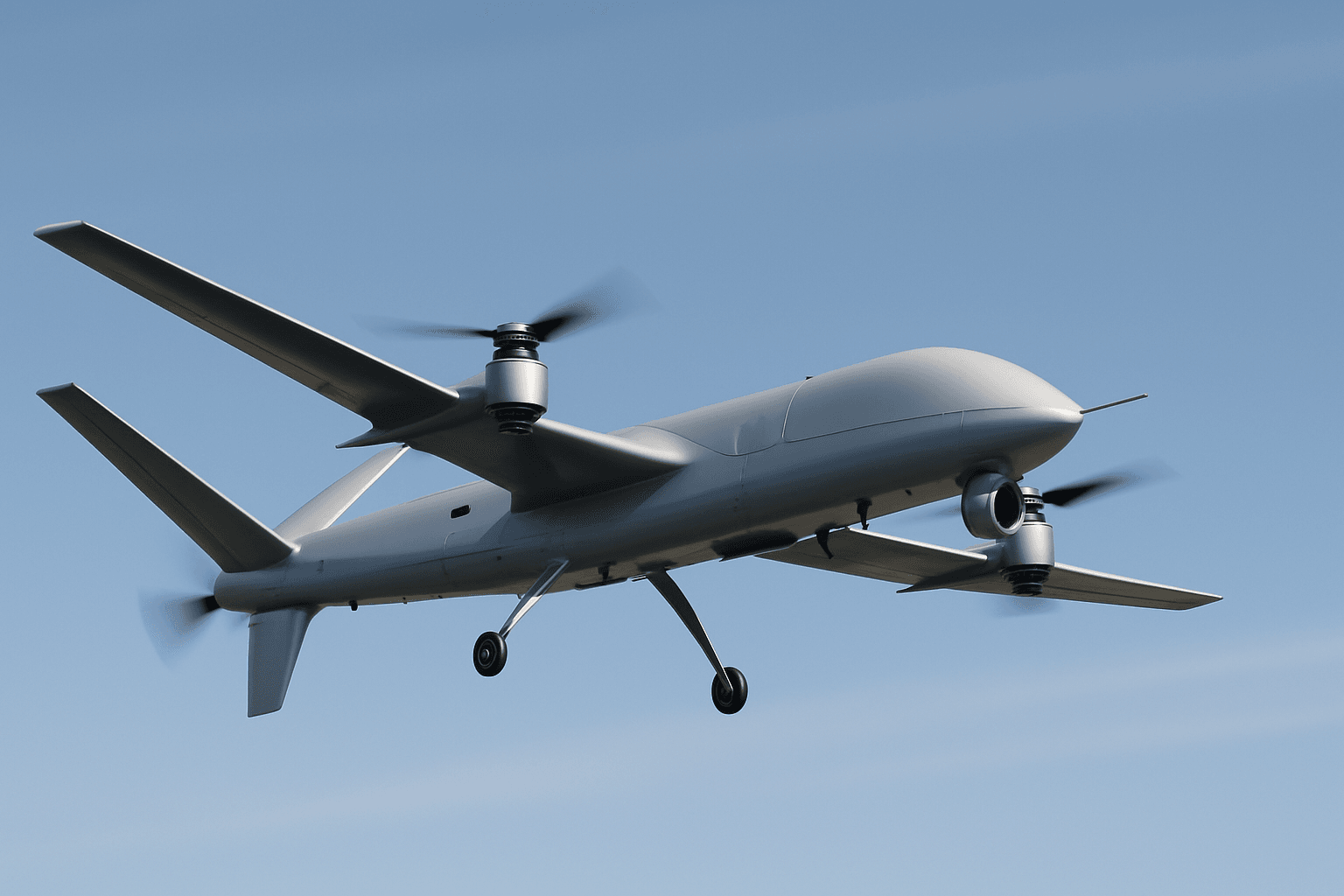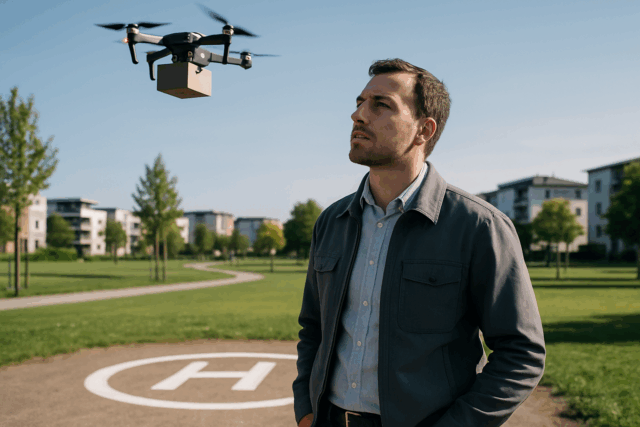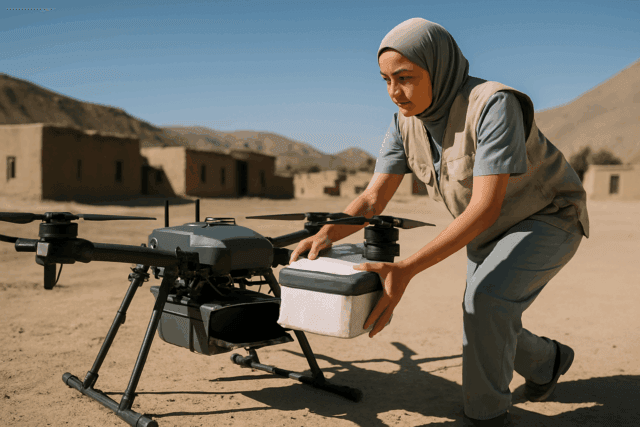Mitsubishi Heavy Industries (MHI) and Yamaha Motor are collaborating on research into hybrid-powered Unmanned Aerial Vehicles (UAVs), aiming to extend their cruising range and payload capacity. This partnership seeks to combine MHI’s expertise in aircraft development with Yamaha’s engine technology to create a medium-sized UAV with enhanced capabilities.
The MHI and Yamaha Partnership
MHI and Yamaha Motor are jointly developing a medium-sized multirotor UAV capable of carrying a payload of 200 kilograms. On May 22, 2025, MHI announced a successful flight test of a hybrid-type UAV equipped with a compact, lightweight power generating unit developed by Yamaha Motor. The companies aim to utilize a hybrid power system to significantly extend the UAV’s cruising range. This research builds upon an agreement established in March 2024, focusing on integrating Yamaha’s power generating unit to achieve extended flight capabilities.
Hybrid Power System
The core of this project is the hybrid power system, which combines a traditional engine with an electric motor. Yamaha Motor is developing a compact and lightweight power generating unit that leverages its expertise in small, high-power engines from its motorcycle business, combined with modern electric motor technology. This hybrid approach offers several advantages:
- Extended Cruising Range: The hybrid system aims to achieve a cruising range of 200 km, a significant increase compared to the 15km range of battery-powered UAVs.
- Increased Payload Capacity: The medium-sized UAV is designed to carry a maximum payload of 200 kg.
- Improved Efficiency: The gasoline engine operates at an optimal RPM range for maximum combustion efficiency, while the electric motor provides additional power and support.
Potential Applications
MHI and Yamaha envision several applications for these medium-sized hybrid UAVs:
- Disaster Relief: Transporting relief supplies to isolated areas, especially in regions prone to frequent disasters, offering an alternative to traditional transportation methods like trucks and ships.
- Logistics: Improving logistics efficiency on routes with low volume, such as remote islands and mountainous regions.
- Infrastructure: Transporting materials for construction and repair work on infrastructure in difficult-to-access areas, such as transmission towers in mountainous regions.
- Security and Surveillance: Border security, counter-insurgency, anti-terrorism, and forest management.
- Inspection and Monitoring: Power grid and pipeline inspections.
Advantages of Hybrid UAVs
Hybrid UAVs offer several advantages over traditional battery-powered drones:
- Longer Flight Time: Hybrid systems provide significantly longer flight times compared to battery-powered drones, ranging from 90 minutes to 5 hours or more, depending on the configuration and payload.
- Higher Payload Capacity: Hybrid drones can carry heavier payloads than standard battery-powered drones. For example, the Skyfront Perimeter drone has a payload capacity of 12 lbs, while the Harris Aerials H6 can carry 33 lbs.
- Operational Versatility: Hybrid VTOL (Vertical Take-Off and Landing) UAVs combine the benefits of both fixed-wing and multirotor aircraft, allowing them to take off and land vertically without the need for runways.
- Fuel Efficiency: Electronic Fuel Injection (EFI) engines consume significantly less fuel than conventional carburetor-based engines, offering up to 65% better fuel efficiency.
Hybrid UAV Types
There are several types of hybrid UAVs, each with its own set of advantages:
- Hybrid Fixed-Wing VTOL UAVs: These UAVs can take off and land vertically, combining the benefits of both fixed-wing and multirotor aircraft. They offer extended flight time, higher safety, and simple operation.
- Gas-Electric Hybrids: These UAVs use a gasoline engine to generate electricity, which powers electric motors. This allows the engine to run at an RPM range for maximum combustion efficiency, resulting in a more efficient power source than a battery alone.
- Hydrogen Fuel Cell Hybrids: These UAVs use hydrogen fuel cells to power the drone, offering energy density advantages over batteries and sustainability advantages over gas fuel. Some designs use the fuel cell to charge the drone’s batteries.
Challenges and Future Trends
Despite their advantages, hybrid UAVs also face challenges:
- Complexity: Hybrid systems are more complex than purely electric systems, requiring more maintenance and potentially increasing the risk of failure.
- Weight: The addition of a gasoline engine or fuel cell can increase the overall weight of the UAV, reducing its payload capacity.
- Emissions: Gasoline-powered hybrid UAVs still produce emissions, although they may be lower than traditional combustion engines due to increased efficiency.
Future trends in hybrid UAV technology include:
- Advancements in Battery Technology: Improvements in battery technology could lead to longer flight times and higher energy density.
- AI-Powered Navigation: Integration of AI-powered navigation systems for enhanced autonomy and safety.
- Integration with 5G Networks: Enhanced connectivity through 5G networks for real-time data transmission and control.
- Adoption of Renewable Energy Sources: Use of renewable energy sources like solar power to supplement or replace gasoline.
- Expanding Applications in Urban Air Mobility (UAM): Use of hybrid UAVs for passenger transport and cargo delivery in urban environments.
Conclusion
The collaboration between MHI and Yamaha Motor represents a significant step forward in the development of hybrid-powered UAVs. By combining their expertise, these companies aim to create UAVs with extended range, increased payload capacity, and improved efficiency, opening up new possibilities for various applications, including disaster relief, logistics, and infrastructure maintenance. As technology continues to advance, hybrid UAVs are poised to play an increasingly important role in the future of aerial mobility.





